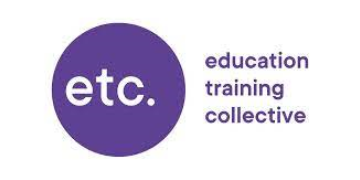Working in safeguarding means you get to see up close the barriers and setbacks that learners face, but you also see their potential – often long before they do.
That’s why I’m a real advocate of intervention programmes, which many colleges invest in to support learners beyond delivering qualifications. At LSEC, we are running one such initiative – Steps to Success – funded through our ten-year equality, diversity and inclusion (EDI) grant project.
It began as a pilot to address achievement gaps, specifically for Black Caribbean males. But we soon saw benefits for a wider cohort. This year, it’s open to all male students wanting to take part. The aim is to help them build confidence and take ownership of their learning journey. We want to help them link their college experience to their wider aspirations – for example, showing how consistent attendance directly improves career prospects.
Our pilot showed promising results. Learners said they felt empowered and supported. It also raised an important question: how do we reach the very hardest to reach learners?
Building connection from the ground up
For me, engagement starts with a natural connection, finding commonality and being relatable. I’ve always had a student-facing role and know this direct contact is crucial. As a safeguarding professional, I work with many learners right from enrolment and gain an in-depth understanding of the challenges they face.
When a young person trusts you enough to open up, you see not just surface issues such as attendance or punctuality but the underlying causes. That insight helps me identify who might benefit most from Steps to Success and how to encourage them to participate. Being present matters: sitting in disciplinary panels, attendance reviews or simply being visible on campus. When students see you are consistently there and genuinely listening, they are far more likely to engage.
A whole-college approach
This work can’t sit in isolation. At LSEC, I collaborate with my safeguarding team, additional learning support (ALS) and curriculum colleagues to provide wraparound support. Our goal is to join up the networks around each learner so they feel supported and, most importantly, that they belong and are cared about.
Encouraging participation also relies on all staff knowing what’s on offer. If tutors, mentors and support teams promote the same opportunities in different contexts, learners hear a consistent message: ‘this is for you’.
Meeting students where they are
We must also recognise this generation’s mindset. Many young people seek instant gratification and respond best when they can see clear, immediate benefits. That might mean offering something small to get them through the door, like a free lunch. Once there, we help them see the longer-term gains – for example, improved self-worth, a sense of direction and hearing a different voice encouraging them along their journey.
Peer encouragement is another powerful motivator. When learners hear success stories from others like them, it hits differently. Hearing “this helped me get back on track” from a peer can break through barriers that staff alone perhaps cannot.
Encouraging accountability and aspiration
Much of my safeguarding work involves helping young people step out of the “shame and blame” cycle – the feeling that things just happen to them. We help them recognise their own agency and take responsibility for their journey.
Reaching out to parents and carers also matters. Even though college isn’t school, families remain an important influence. We send letters home explaining the value of the programme and its goals.
Learning from what works
Finally, evaluation is key. We can’t just assume success because students attend or say they enjoyed it. We track impact carefully – from achievement rates to student feedback – to ensure interventions genuinely make a difference, then can evolve and improve them.
Engaging the hardest-to-reach students boils down to three things:
- Build heartfelt relatable relationships with learners, including through peers.
- Invest in enrichment and belonging opportunities. Our recent 3000 Voices research into young people’s wellbeing revealed that this is something they want and need.
- Ensure every staff member understands the benefits of the programme, making them more inclined to refer those students who they feel will benefit.
We can’t force young people to engage – we want them to want to engage. To do this every opportunity has to feel relevant and rewarding, with students at the very centre of everything we do.











Your thoughts